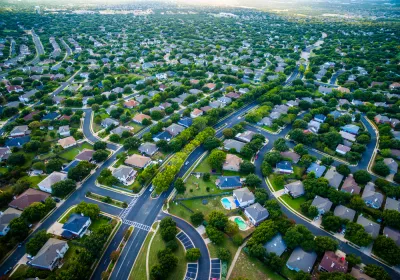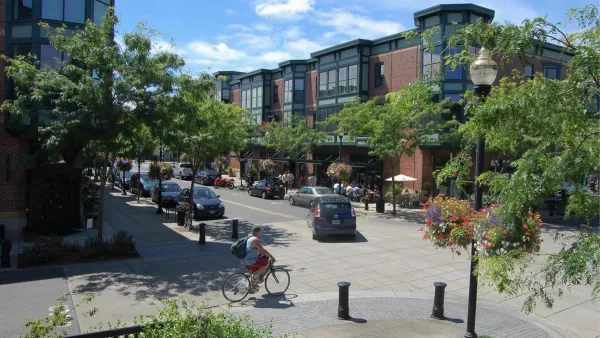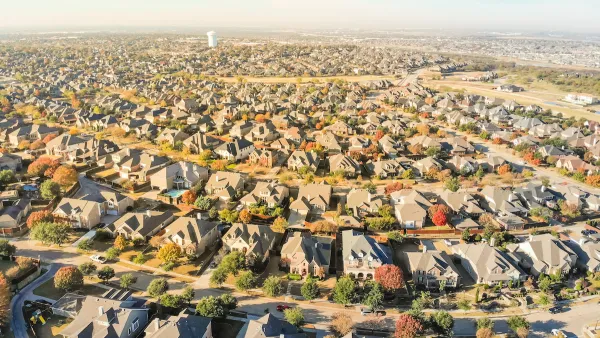With more people moving away from central cities, we have the chance to avoid past mistakes and redesign the American suburb to be less car-centric and more diverse.

What if we reinvent the suburbs to be more sustainable? That’s what Addison Del Mastro asks in a recent piece on Vox. Del Mastro argues that, with remote work changing the nature of commuting and more millennials looking to buy homes, now is the time to reenvision what suburban life could look like and write a “second draft” that’s better than the first.
“The demand for something like urban living is real. Even at the outer edges of growing metro areas, mixed-use walkable developments pop up alongside familiar subdivisions and McMansions.” Indeed, “Between 2019 and 2020, the share of millennials who live in suburbs increased by 4 percentage points; and in 2014, more than 60 percent of immigrants lived in suburbs, up from just over half in 2000.”
As Del Mastro has written before, immigrant communities are transforming the strip mall and other suburban spaces to accommodate different uses and culturally relevant services. “The ongoing diversification of the suburbs is coinciding with the appearance of New Urbanist, mixed-use development there, and the renewed interest in suburban living following the pandemic. The makings of a suburban transformation are here.”
As Del Mastro points out, “Zoning codes were not really meant to be perpetual; master plans were supposed to guide their evolution over the decades, planning for and accommodating growth.” It’s time for the suburbs to embrace change, and for planners to recognize their potential to transform into more walkable, sustainable, and diverse communities.
FULL STORY: What if the suburbs were just a first draft?

National Parks Layoffs Will Cause Communities to Lose Billions
Thousands of essential park workers were laid off this week, just before the busy spring break season.

Retro-silient?: America’s First “Eco-burb,” The Woodlands Turns 50
A master-planned community north of Houston offers lessons on green infrastructure and resilient design, but falls short of its founder’s lofty affordability and walkability goals.

Delivering for America Plan Will Downgrade Mail Service in at Least 49.5 Percent of Zip Codes
Republican and Democrat lawmakers criticize the plan for its disproportionate negative impact on rural communities.

Test News Post 1
This is a summary

Test News Headline 46
Test for the image on the front page.

Balancing Bombs and Butterflies: How the National Guard Protects a Rare Species
The National Guard at Fort Indiantown Gap uses GIS technology and land management strategies to balance military training with conservation efforts, ensuring the survival of the rare eastern regal fritillary butterfly.
Urban Design for Planners 1: Software Tools
This six-course series explores essential urban design concepts using open source software and equips planners with the tools they need to participate fully in the urban design process.
Planning for Universal Design
Learn the tools for implementing Universal Design in planning regulations.
EMC Planning Group, Inc.
Planetizen
Planetizen
Mpact (formerly Rail~Volution)
Great Falls Development Authority, Inc.
HUDs Office of Policy Development and Research
NYU Wagner Graduate School of Public Service





























